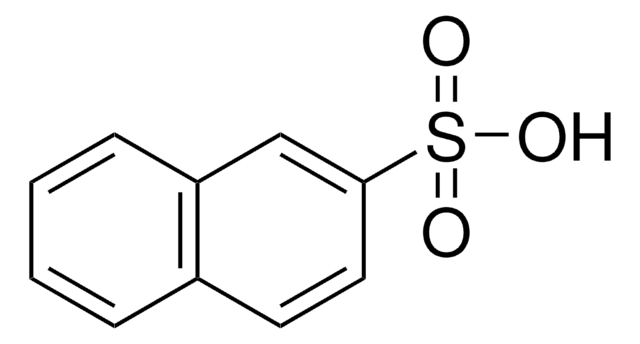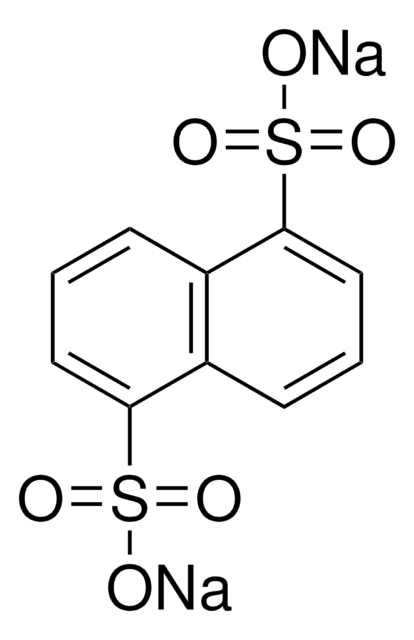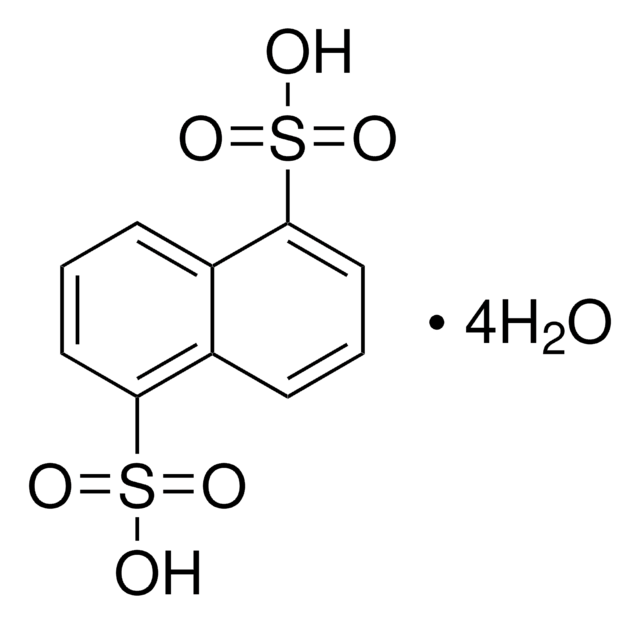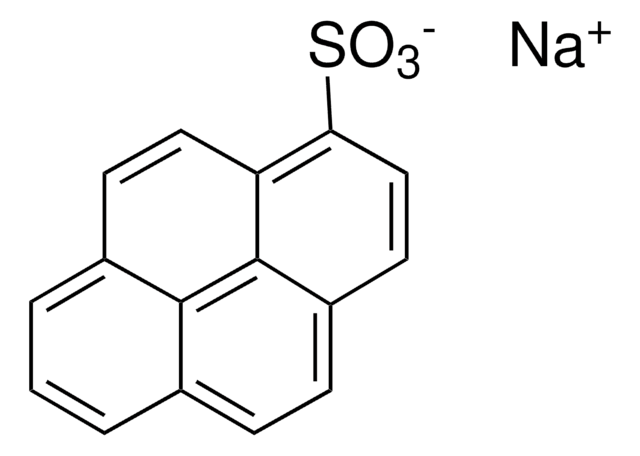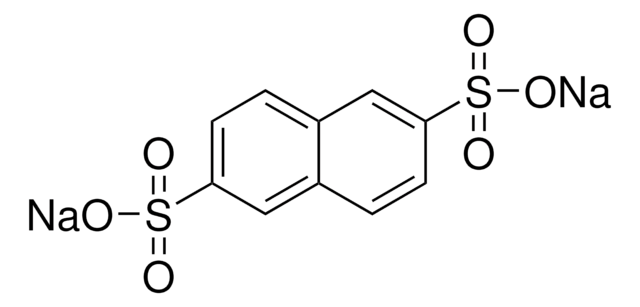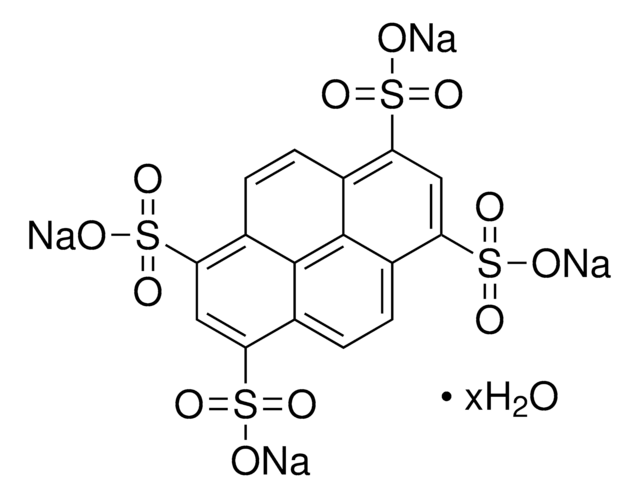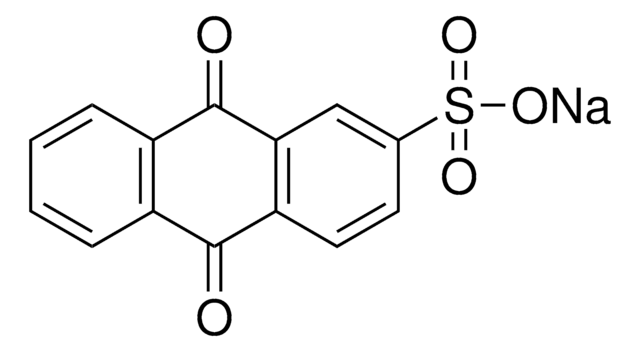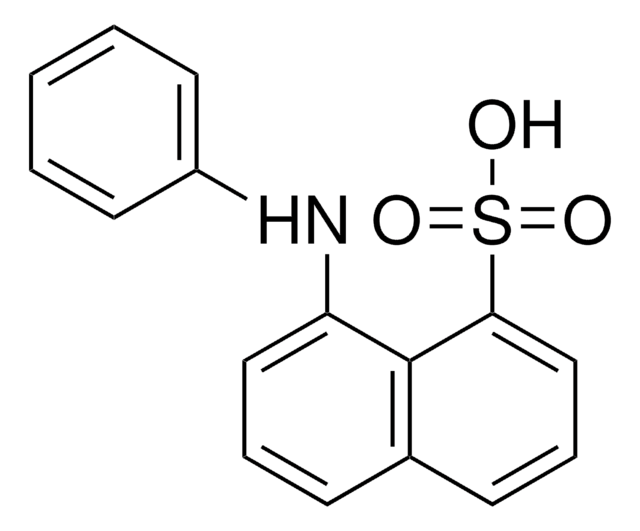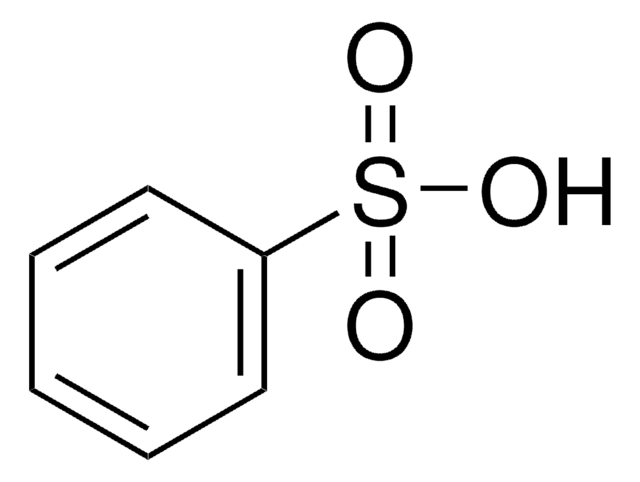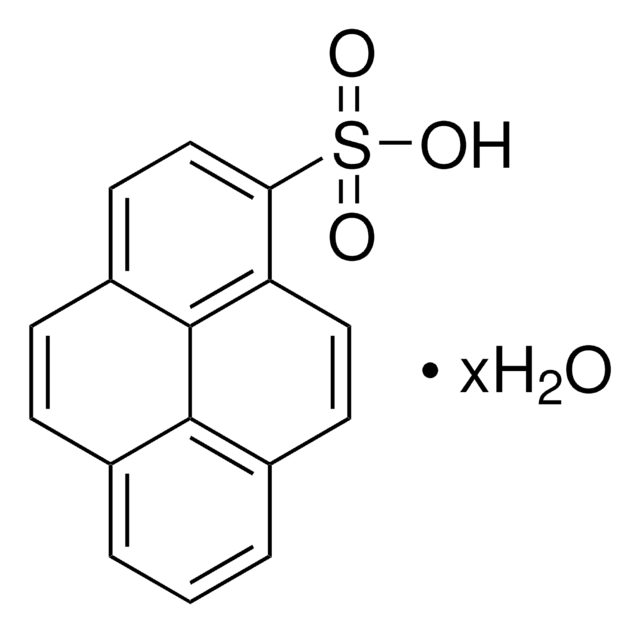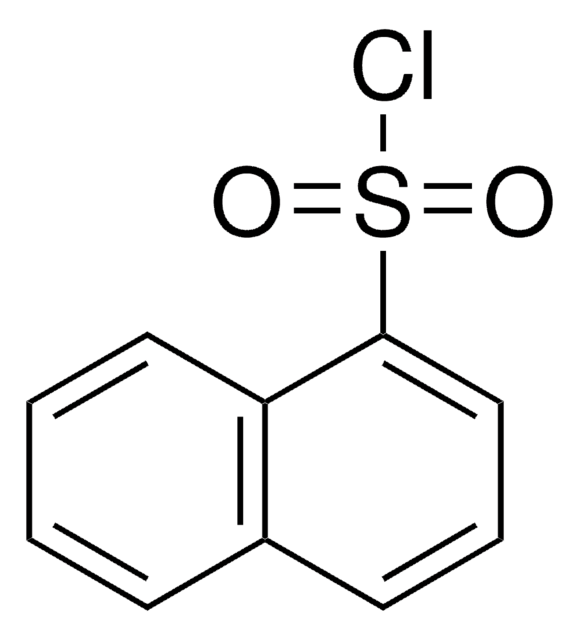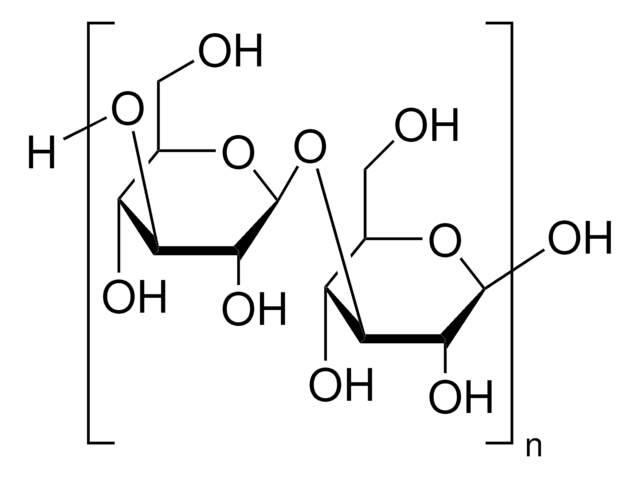186341
1-Naphthalinsulfonsäure
>50%
About This Item
Empfohlene Produkte
Form
solid
Qualitätsniveau
Konzentration
>50%
mp (Schmelzpunkt)
77-79 °C (lit.)
Löslichkeit
alcohol: freely soluble
diethyl ether: slightly soluble
water: freely soluble
SMILES String
OS(=O)(=O)c1cccc2ccccc12
InChI
1S/C10H8O3S/c11-14(12,13)10-7-3-5-8-4-1-2-6-9(8)10/h1-7H,(H,11,12,13)
InChIKey
PSZYNBSKGUBXEH-UHFFFAOYSA-N
Angaben zum Gen
human ... EGFR(1956) , LCK(3932)
Verwandte Kategorien
Allgemeine Beschreibung
Anwendung
Sonstige Hinweise
Signalwort
Danger
H-Sätze
Gefahreneinstufungen
Eye Dam. 1 - Met. Corr. 1 - Skin Corr. 1B
Lagerklassenschlüssel
8A - Combustible, corrosive hazardous materials
WGK
WGK 3
Flammpunkt (°F)
Not applicable
Flammpunkt (°C)
Not applicable
Analysenzertifikate (COA)
Suchen Sie nach Analysenzertifikate (COA), indem Sie die Lot-/Chargennummer des Produkts eingeben. Lot- und Chargennummern sind auf dem Produktetikett hinter den Wörtern ‘Lot’ oder ‘Batch’ (Lot oder Charge) zu finden.
Besitzen Sie dieses Produkt bereits?
In der Dokumentenbibliothek finden Sie die Dokumentation zu den Produkten, die Sie kürzlich erworben haben.
Kunden haben sich ebenfalls angesehen
Unser Team von Wissenschaftlern verfügt über Erfahrung in allen Forschungsbereichen einschließlich Life Science, Materialwissenschaften, chemischer Synthese, Chromatographie, Analytik und vielen mehr..
Setzen Sie sich mit dem technischen Dienst in Verbindung.